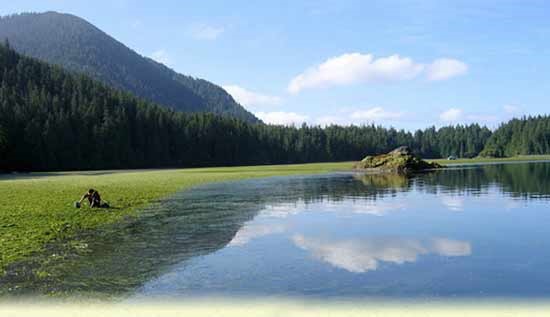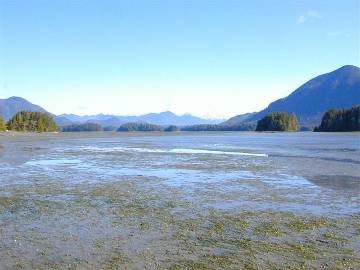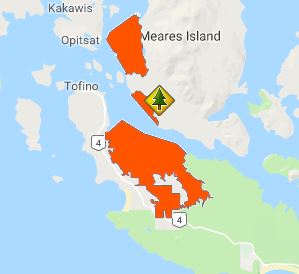Tofino Mudflats Wildlife Management Area
Date Designated: April 8, 1997
Purpose: Conservation of an important wetland complex for waterfowl and shorebirds.
Size: 1,645 hectares
Region: West Coast
Nature and culture
Fish and Wildlife: The Tofino Mudflats has been ranked as the most important wetland complex on the west coast of Vancouver Island and one of the top ten most critical wetlands for migratory waterfowl on the west coast of Canada. It is one of a very few areas in Pacific Canada nominated as a Western Hemisphere Shorebird Reserve Network (WHSRN) site to help conserve migratory shorebirds. The WMA also supports fish and shellfish species, along with marine and terrestrial mammals such as Harbour Porpoise, Harbour Seal, Mink, River Otter, Raccoon, Black Bear, Gray Wolf, Black-tailed Deer and Cougar. Eight species of herptiles are thought to utilize the WMA, and endangered wildlife species that occur here include Northern Goshawk, Peregrine Falcon and Northern (Steller) Sea Lion. The region accounts for 10 to 15% of the total commercial Dungeness Crab landings in BC, and it is estimated that one half of these are dependent on the WMA area.
Physiography, Climate and Vegetation: The WMA is comprised of tidal flats, shallow to deep subtidal areas, rock/gravel beaches, marshes, tidal channels, streams, riparian areas, and Western Hemlock-Western Red Cedar coastal upland forests. The mudflats support extensive communities of Eelgrass and Green Algae.
Cultural Heritage: The Tla-o-qui-aht First Nation has historically used the area in and around the Tofino Mudflats WMA, and continues to do so.
Planning and management
Information on management direction and possible restrictions on visitor activities are available from the Conservation Lands regional contacts.
Management Partners:
Image
One section of foreshore of the Tofino Mudflats WMA lies approximately 7 km southeast of Tofino, and two other sections are along the southwest coast of Meares Island.



